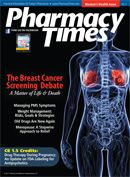Publication
Article
Pharmacy Times
Asthma Watch
Obesity, Asthma Linked to Daytime Sleepiness in Children
Children who are obese, anxious, depressed, or have asthma are more likely to experience excessive daytime sleepiness (EDS), according to research published in the April issue of Sleep.
“Although EDS in children is commonly assumed by physicians and the public to be the result of sleep-disordered breathing or inadequate sleep, our data suggest that EDS in young children is more strongly associated with obesity and mood issues as it is in adults,” said Edward Bixler, PhD, professor of psychiatry and vice chair of research, Sleep Research and Treatment Center, Penn State College of Medicine.
In the study, researchers recorded the height, weight, body mass index, and waist circumference of children aged 5 to 12. Participants spent 1 night in a sleep laboratory and were screened for sleep apnea. Parents were asked whether their child has a problem with sleepiness during the day, and whether a teacher or other supervisor has commented that the child appears sleepy during the day; if they answered yes to 1 or both of the questions, children were classified as having EDS.
According to the study, 15% of participants were found to have EDS. “Our study indicates that EDS is highly prevalent in children,” said Dr. Bixler, noting that the condition “may interfere with daytime functioning, including academic performance.”
The authors found that waist circumference, positive history of asthma, use of asthma medication, heartburn, and parent-reported symptoms of anxiety/depression and of sleep difficulty were significantly associated with EDS. Waist circumference alone contributed to the independent prediction of EDS, suggesting that metabolic factors may play a contributing role in the mechanisms of EDS.
“Primary lines of treatment might include weight loss if the child is overweight, treatment for underlying depressive and anxious symptoms, and implementation of nocturnal asthma prevention methods if the child is diagnosed with asthma,” said Dr. Bixler. PT
New Online Tool Tracks Symptoms of Exercise-Induced Asthma
The American College of Allergy, Asthma and Immunology (ACAAI) has developed a free online tool to help patients with exercise-induced bronchoconstriction (EIB) more easily track their symptoms.
With MyEIBJournal.org, patients can keep a daily log of exercise, symptoms, and medication use and create personalized reports that can be printed and shared with their health care providers. The tool is also accessible through mobile devices.
“If you have breathing problems such as shortness of breath, wheezing, coughing, chest tightness, and unusual fatigue when you exercise, it’s important to keep track of symptoms,” said John Winder, MD, chair of the ACAAI Nationwide Asthma Screening Program. “This information will help you and your allergist best manage your condition so you can be active and take part in your favorite sports.”
According to ACAAI, exercise-induced asthma affects about 10% of the US population. Of the estimated 24 million individuals who have asthma, 80% to 90% have EIB.
“Both asthma and EIB can be controlled and the first step is diagnosis and treatment, including medication,” said Dr. Winder.
Asthma Rates in the United States Continue to Climb
A report from the Centers for Disease Control and Prevention (CDC) finds that 1 in 12 Americans have asthma, and that despite efforts to control key triggers such as indoor smoking and outdoor air quality, the numbers continue to grow.
According to a CDC Vital Signs report published in May 2011, 4.3 million individuals were diagnosed with asthma from 2001 to 2009. Although all demographic groups saw an increase during that time period, the pediatric population was hit hardest, with asthma affecting 9.6% percent of children compared with 7.7% of adults.
“Despite the fact that outdoor air quality has improved and we’ve reduced 2 common asthma triggers—secondhand smoke and smoking in general—asthma is increasing,” said Paul Garbe, MPH, chief of CDC’s Air Pollution and Respiratory Health Branch. “While we don’t know the cause of the increase, our top priority is getting people to manage their symptoms better.”
The biggest increase in asthma rates was seen in African American children, rising almost 50% from 2001 through 2009. Seventeen percent of non-Hispanic African American children had asthma in 2009, the highest rate among racial/ethnic groups.
The report also found that the cost of treating asthma rose about 6%, to $56 billion, in 2007.
“Asthma is a serious, lifelong disease that unfortunately kills thousands of people each year and adds billions to our nation’s healthcare costs,” said CDC Director Thomas Frieden, MD, MPH, in a statement. “We have to do a better job educating people about managing their symptoms and how to correctly use medicines to control asthma so they can live longer more productive lives while saving health care costs.”
Fast Fact: in the United States, more than 17 million individuals older than 18 years have asthma.







